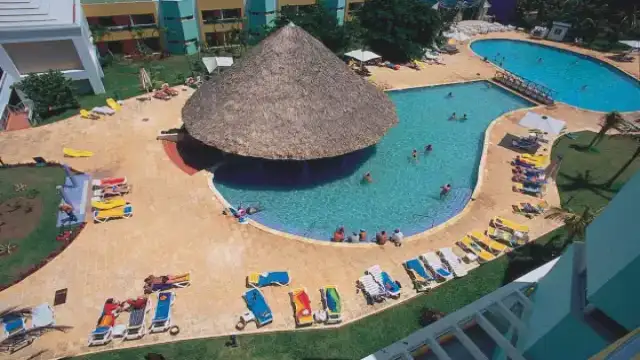Integrating Pools with Septic and Well Systems: A New York Guide
In regions like the Hudson Valley, private wells and septic systems are the norm. Homeowners frequently ask, “Can I build a pool if my property includes these systems?” The answer is yes. By adhering to state and local codes, these systems can coexist harmoniously. For those navigating pool installations in areas like Westchester, PoolRepair.fyi offers a wealth of guidelines to keep these critical installations in balance.
Those researching “pool septic Westchester” likely seek guidance on where to safely and legally position a pool. Thankfully, New York State and local health departments, like those in Westchester and Dutchess Counties, provide comprehensive directives. By following these, you can ensure that your pool enhances your property without disrupting underlying water systems.
Quick Answer: Pool Installation with Septic and Well Systems
It is possible to install a pool if your property features septic systems or wells in New York. State guidelines dictate that in-ground pools must be at least 20 feet from septic tanks, 35 feet from leach fields, and anywhere from 50 to 100 feet from private wells. Above-ground pools require a clearance of 10 to 20 feet. Health departments in Westchester, Rockland, and Dutchess Counties enforce these standards during the permitting process to safeguard local water quality and system functionality.
Importance of Pool Setbacks for New York Homeowners
The interaction between pools, wells, and septic systems can impact local groundwater systems if not properly managed. Inappropriate spacing may lead to issues like pool water infiltrating septic zones or wastewater moving towards wells. Such risks are heightened in suburban and semi-rural areas characterized by varied terrains and shallow soils.
New York’s Appendix 75-A lays out minimum separation standards between wells and septic elements, further refined by counties like Westchester and Dutchess to address specific local conditions. For those considering a pool in areas like Dutchess County, understanding these local adaptations is crucial as they determine viable pool installation sites.
Deciphering New York’s Pool and Septic Guidelines
Appendix 75-A, part of the New York State Department of Health’s residential wastewater standards, provides the framework for separation between septic systems, wells, and other possible contaminants. While pools are not explicitly mentioned, they affect subsurface drainage and thus fall within the scope of these regulations.
For example, leach fields must be sited at least 100 feet from wells, and septic tanks should maintain a minimum distance of 50 feet—a figure that extends to 200 feet if the septic system is uphill from a well. Health departments in Westchester, Rockland, and Dutchess Counties use these statewide standards as a foundation but may adjust them to local conditions during pool plan evaluations.
Local Specifications: Pool Rules Across Counties
Westchester County Pool and Septic Guidelines
Westchester County’s unique landscape demands careful pool placement. The county health department enforces stricter spacing to prevent issues like groundwater contamination and soil compaction over septic areas. Their guidelines require in-ground pools to be at least 20 feet from septic tanks and 35 feet from leach fields. Above-ground pools need a minimum of 10 feet of clearance.
Furthermore, in-ground pools must maintain a 50-foot distance from private wells, while those above ground with watertight liners can be as close as 10 feet. These policies ensure uniformity and safety for homeowners planning installations, echoing the state’s emphasis on alignment with Appendix 75-A.
Rockland and Dutchess County Pool Setback Directives
Rockland and Dutchess Counties largely adhere to the state’s Appendix 75-A, although they employ local health departments for comprehensive plan reviews. The Dutchess County Department of Behavioral and Community Health references Appendix 75-A and additional Department of Health fact sheets when evaluating pool proposals.
These standards reinforce a separation of 100 feet between wells and leach fields, ensuring protection across various terrains, particularly on sloped properties that challenge standard spacing. Dutchess County also rigorously verifies existing septic and well conditions, underscoring their commitment to sustainable pool development.
New York’s Pool Setback Chart
The following chart summarizes crucial setback requirements from both New York State and Westchester County regulations. Remember, these guidelines are a starting point; local health officials might propose adjustments based on site-specific factors like soil type and groundwater dynamics.
- In-Ground Pool: 20 ft setback to septic tanks in Westchester, 35 ft to leach fields, 50–100 ft to wells.
- Above-Ground Pool: 10–20 ft setback in Westchester, 10 ft from wells with potential for up to 100 ft elsewhere.
- Property Line: At least 10 ft from any part of the pool.
- Dwelling/Building: Requires a minimum of 10 ft, 20 ft for leach fields, 50 ft from septic components.
These clearances are crucial for maintaining water quality and septic system integrity. For instance, the 35-foot separation in Westchester between pools and absorption fields helps prevent soil compaction during construction.
How to Determine If Your Yard Qualifies for Pool Installation
Start by obtaining a property survey to identify the precise locations of septic and well components. If official records are unclear, contact the local health department, which often has archival maps to assist in planning.
Understanding groundwater flow is also critical. If your septic system is uphill from your intended pool site, greater setbacks might be necessary. Local inspectors measure from the pool’s edge to the nearest system feature, helping to ensure compliance during all stages of pool development.
How Variances Can Enable Pool Installation on Small Lots
In densely populated areas of the Hudson Valley, variance applications can adjust space constraints that otherwise limit pool installation. In Westchester, variances may be granted by demonstrating that compliance is challenging due to terrain or property size.
Dutchess County follows a similar process, allowing variances when maximum feasible separation is unattainable. Here, homeowners need to propose alternate solutions like enhanced drainage or water liners to offset any increased risk due to reduced setbacks.
Permit Approval Process for Properties with Septic or Well Systems
Two primary approvals are required when building a pool on properties with septic or wells in New York. The local building department assesses structural integrity, safety measures, and electrical connections, while the county health department ensures water system stability.
Permit applications generally require detailed site plans, including septic and well locations and set distances. Officials may also ask for additional documentation, such as soil tests or water quality reports, to verify compliance. Understanding these requirements ahead of time helps streamline the approval process.
Getting a Head Start: Avoid Project Delays
Timing is critical when seeking health department reviews, especially during the spring when permit applications peak. Starting the application process early allows time for potential surveys and design tweaks, enhancing the project’s viability.
Proactively addressing site-specific issues and engaging with the local health department early can resolve minor discrepancies that might delay construction. Once allowed, PoolRepair.fyi offers excellent resources for optimizing pool maintenance and operation.
Key Takeaways
Pool construction is compatible with septic or well systems if you comply with state and county regulations, which typically mandate set distances ranging from 20 to 100 feet. Familiarity with Appendix 75-A and higher local standards is essential, particularly in counties like Westchester and Dutchess.
Conducting a thorough property survey to locate septic tanks and wells gives designers and planners the precise data needed to create a compliant layout. Even on smaller lots, variances and engineered solutions provide options for those determined to build a pool.
Begin planning early, especially during the busy administrative pre-spring season, to help avoid permit delays. Once your pool is complete, turn to PoolRepair.fyi for essential maintenance guidelines, ensuring your installation remains efficient and safe year-round.
Achieving a Safe, Complacent Pool Design
Having a septic system or private well doesn’t preclude the enjoyment of a backyard pool in New York; it merely involves comprehensive planning and adherence to state and local guidelines. By aligning with Appendix 75-A and local regulations, you can protect local water integrity while enjoying a beautiful outdoor space.
Whether navigating “pool septic Westchester” specifications or assessing “well setbacks in Dutchess,” early coordination with local health authorities and experienced design professionals ensures your pool project’s success.
References
New York State Department of Health: Appendix 75-A – Wastewater Treatment Standards–Residential Onsite Systems.
Westchester County Department of Health: Residential Onsite Wastewater and Well Regulations.
Westchester County Department of Health: Private Well–Swimming Pool Separation Policy.
New York State Department of Health: Individual Water Supply Wells – Fact Sheet #6.
#PoolRepair #PoolMaintenance #PoolInstallation #SepticSystems #WellWaterManagement


